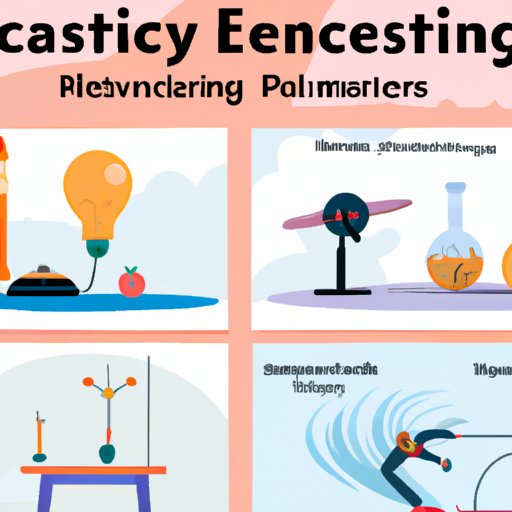Introduction
Physical science is a branch of science that studies the physical properties of the universe. It is a broad field that encompasses a range of disciplines, including chemistry, physics, astronomy, and earth science. A physical science course provides an introduction to these various disciplines, allowing students to explore the fundamental principles at the foundation of the natural world.

Different Topics Covered in Physical Science Courses
Physical science courses typically cover a range of topics from the four main disciplines. Chemistry is the study of matter and its interactions, and it examines the structure of atoms and molecules as well as their reactions with each other. Physics is the study of energy and matter and their interactions with each other, and it includes topics such as force and motion, waves, and electricity. Astronomy is the study of the universe, and it includes topics such as the formation of stars and galaxies, the evolution of the universe, and the search for extraterrestrial life. Finally, earth science is the study of the planet, including topics such as geology, meteorology, and oceanography.
Benefits of Taking a Physical Science Course
Taking a physical science course has a number of benefits. First, it allows students to develop their problem-solving skills by exploring the various scientific principles and theories. This can be beneficial for students who are considering pursuing a career in science or engineering, as it provides them with the necessary foundation for success. Second, it enables students to increase their understanding of the natural world. By studying the principles of physical science, students gain an appreciation for the complexity and beauty of the universe. Finally, physical science courses provide students with an opportunity to explore the various career opportunities available to those with a background in physical science.
Exploring the Core Concepts of Physical Science
Physical science courses explore the core concepts of the various disciplines. For example, in chemistry, students learn about the structure and properties of matter, as well as the principles of chemical reactions and thermodynamics. In physics, students explore concepts such as force and motion, waves, and electricity. In astronomy, students learn about the structure of the universe and the objects within it, as well as the laws that govern its behavior. Finally, in earth science, students examine the processes at work on the planet, such as the formation of rocks and minerals, the atmosphere and climate, and the oceans and biosphere.

Investigating the Interdisciplinary Aspects of Physical Science
Physical science is inherently interdisciplinary, meaning that it draws from multiple disciplines in order to understand the physical world. This means that physical science courses often explore the relationships between the various disciplines, such as the impact of physics on chemistry, or the influence of astronomy on earth science. Additionally, physical science courses also explore the cross-disciplinary applications of physical science, such as the use of physics in engineering or the use of chemistry in medicine.
Examining the Interactions Between Physical Science and Other Sciences
Physical science courses also examine the ways in which physical science interacts with other sciences. For example, students may explore the impact of physical science on everyday life, such as the use of physics in the design of cars or the use of chemistry in the production of food products. Additionally, physical science courses may also provide students with an opportunity to explore the interface between physical science and other disciplines, such as the application of physics to biology or the application of chemistry to economics.

Exploring the Career Opportunities Available with Physical Science Training
Physical science courses can open up a variety of career opportunities for students. Those with a background in physical science can pursue careers in research and development, engineering, and healthcare. Research and development careers involve researching new technologies and developing innovative solutions to problems. Engineering careers involve designing and building structures and systems that meet specific needs. Healthcare careers involve applying physical science principles to diagnose and treat illnesses.
Conclusion
Physical science courses provide students with a comprehensive introduction to the various branches of physical science, allowing them to explore the fundamental principles at the foundation of the natural world. These courses also provide students with the opportunity to develop their problem-solving skills, increase their understanding of the natural world, and explore the various career opportunities available with physical science training. If you are interested in pursuing a career in science or engineering, physical science courses are an excellent way to get started.
(Note: Is this article not meeting your expectations? Do you have knowledge or insights to share? Unlock new opportunities and expand your reach by joining our authors team. Click Registration to join us and share your expertise with our readers.)
